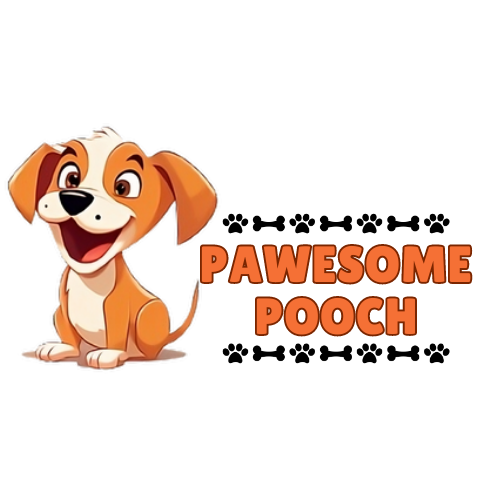
If you’ve ever found yourself wondering how to calm down a hyperactive dog, look no further. We all love our furry friends, but sometimes their endless energy can be overwhelming. Whether it’s incessant barking, constant jumping, or darting around like a tornado, dealing with a hyperactive dog can be a challenge. But fear not, as there are several effective techniques and tips that can help you bring some much-needed calm to your four-legged companion. From exercise and mental stimulation to calming aids and training techniques, we’ve got you covered. So, let’s explore some practical ways to help your hyperactive dog find their inner zen.

Understanding Hyperactivity in Dogs
Definition of hyperactivity
Hyperactivity in dogs refers to excessive and uncontrollable levels of energy and restlessness. It is characterized by constant movement, difficulty in staying still, and an inability to focus or pay attention. While some level of energy and excitement is normal in dogs, hyperactivity can be a cause of concern and discomfort for both the dog and the owner.
Causes of hyperactivity in dogs
There can be various underlying factors contributing to hyperactivity in dogs. Genetic predisposition, lack of proper training, insufficient mental and physical stimulation, certain medical conditions, and even environmental triggers can all play a part. Understanding the root cause of your dog’s hyperactivity is crucial in finding the most effective solution for managing their behavior.
Identifying signs of hyperactivity
Recognizing the signs of hyperactivity in dogs is essential for early intervention and effective treatment. Some common signs to look out for include constant pacing, excessive barking, jumping on people, destructive behavior, difficulty settling down, and an inability to focus on commands or tasks. If your dog consistently exhibits these behaviors, it may indicate hyperactivity that needs to be addressed.
Assessing Your Dog’s Health
Consulting a veterinarian
Before addressing your dog’s hyperactivity, it is important to consult with a veterinarian. A veterinarian can help rule out any underlying medical conditions or physiological factors that may be contributing to your dog’s hyperactive behavior. A thorough examination, including blood tests and other diagnostics, can provide valuable insights into your dog’s overall health and potential causes of hyperactivity.
Rule out physical ailments
Certain medical issues, such as thyroid problems or pain from conditions like arthritis, can cause restlessness and hyperactivity in dogs. Your veterinarian will be able to assess and investigate any potential physical ailments that may be contributing to your dog’s behavior. By treating these underlying health issues, you can help alleviate your dog’s hyperactivity.
Consider breed traits
Different dog breeds have different energy levels and behavior characteristics. Some breeds are naturally more energetic and require ample physical and mental stimulation to prevent hyperactivity. Researching the traits of your dog’s breed can help you understand their needs better and tailor your approach to managing their hyperactivity.
Diet and nutrition
Your dog’s diet and nutrition can also play a role in their behavior. Ensure that your dog is receiving a balanced diet that provides the necessary nutrients for their overall well-being. Avoid feeding them foods high in artificial additives or excessive amounts of sugar, as these can potentially contribute to hyperactivity. Consulting with a veterinarian or a professional in canine nutrition can help you make the best choices for your dog’s diet.
Creating a Calming Environment
Provide a designated safe space
Creating a designated safe space for your dog can help them alleviate anxiety and promote a sense of security. This could be a crate, a comfortable bed, or a specific room where they feel calm and relaxed. Make sure the space is quiet, away from loud noises or distractions, and filled with their favorite toys or blankets.
Reduce exposure to triggers
Identifying and minimizing exposure to triggers that cause your dog to become hyperactive is essential. Common triggers may include loud noises, unfamiliar environments, or even certain people or animals. Observe your dog’s reactions and try to avoid or manage situations that trigger hyperactivity. Gradual exposure and desensitization techniques can also help your dog become more comfortable in situations that would otherwise trigger hyperactivity.
Establish a regular routine
Dogs thrive on routine and predictability, as it helps them feel secure and reduces hyperactivity. Establishing a regular routine for feeding, exercise, playtime, and rest can provide structure and stability for your dog. Aim for consistency in timings and activities to help your dog understand and anticipate what comes next, reducing their overall levels of hyperactivity.
Maintain a peaceful atmosphere
Creating a peaceful and calm environment at home can greatly contribute to managing your dog’s hyperactivity. Minimize noisy distractions, such as loud TV or music, and ensure that there is a peaceful ambiance in their living space. Keeping the environment clean and organized can also help promote a sense of calmness for both you and your dog.
Mental and Physical Stimulation
Engaging in regular exercise
Regular exercise is crucial in managing a hyperactive dog. Physical activities, such as brisk walks, jogging, or playing fetch, help burn off excess energy and stimulate the release of endorphins, which promote a sense of well-being and relaxation. Aim for daily exercise sessions tailored to your dog’s breed and energy level.
Enrichment activities
In addition to physical exercise, providing mental stimulation is equally important in calming a hyperactive dog. Engage your dog in interactive toys, puzzle games, or hide-and-seek activities that challenge their problem-solving skills and keep their minds occupied. Mental stimulation not only helps alleviate hyperactivity but also helps prevent boredom and destructive behavior.
Mental stimulation through training
Training sessions can provide excellent mental stimulation for your dog, improving their focus and calming their hyperactive tendencies. Teach them basic obedience commands, such as sit, stay, or leave it, using positive reinforcement techniques. Consistent training sessions not only promote mental well-being but also strengthen the bond between you and your dog.
Interactive toys and puzzles
Toys designed to mentally stimulate dogs, such as treat-dispensing toys or interactive puzzles, can be effective in calming hyperactivity. These toys require your dog to work for their rewards, encouraging problem-solving skills and engaging their focus. Rotate and vary the toys regularly to prevent boredom and maintain your dog’s interest.

Positive Reinforcement Training
Reward-based techniques
Positive reinforcement training is a highly effective and humane approach to addressing hyperactivity in dogs. Rewarding your dog’s calm and desired behaviors with treats, praise, or playtime reinforces those behaviors and encourages their repetition. Avoid punishment or reprimanding, as it can increase anxiety and exacerbate hyperactivity.
Teaching basic obedience commands
Teaching your dog basic obedience commands, such as sit, lie down, or stay, can provide structure and guidance, helping to calm their hyperactivity. Consistent training sessions focusing on impulse control and calm behavior can significantly improve your dog’s ability to manage their energy and focus.
Desensitizing to distractions
Hyperactive dogs can often become easily overwhelmed by distractions in their environment. Gradually exposing them to these distractions and pairing them with positive experiences can help desensitize your dog and reduce their hyper-reactivity. Start with low-level distractions and gradually increase the intensity or complexity as your dog becomes more comfortable.
Calm behavior reinforcement
Rewarding and reinforcing calm behaviors is important in managing a hyperactive dog’s behavior. Whenever your dog exhibits calmness, such as sitting quietly or resting calmly, provide verbal praise, petting, or treats to reinforce the behavior. With consistent reinforcement, your dog will learn to associate calm behaviors with positive rewards, helping them regulate their energy levels.
Relaxation Techniques
Massage therapy
Massage therapy can be a beneficial technique for calming a hyperactive dog. Gentle and soothing massages help relax the muscles, increase blood circulation, and reduce anxiety. You can learn basic massage techniques from a professional or consult with a canine massage therapist for guidance.
Music and soothing sounds
Playing calming music or soothing sounds can have a calming effect on hyperactive dogs. Soft classical music or natural sounds like waves or bird songs can help drown out disturbing noises and create a peaceful ambiance. Experiment with different types of music to find what works best for your dog’s relaxation.
Aromatherapy
Certain scents, such as lavender or chamomile, are known for their calming properties in both humans and dogs. Using essential oils or specially formulated dog-safe aromatherapy products can help create a relaxing atmosphere for your hyperactive dog. However, it is essential to consult with a professional aromatherapist or veterinarian to ensure safe and appropriate use of aromatherapy products.
Discovering what calms your dog
Each dog is unique, and what works for one may not work for another. Take the time to observe and understand what calms your hyperactive dog individually. Experiment with different techniques, environments, and activities to identify the triggers that help your dog relax. Strongly bond with your dog and build a trusting relationship to better understand their needs.

Behavior Modification Options
Adapting the environment
Making necessary adjustments to your dog’s environment can help reduce their hyperactivity. Minimize visual and auditory stimuli that may trigger restlessness or anxiety. Use blinds or curtains to block excessive sunlight or outside distractions. Create a designated space for your dog’s toys, bed, and food bowls to establish clear boundaries.
Behavioral medication
In some cases, medication prescribed by a veterinarian may be necessary to manage a hyperactive dog’s behavior. Medications, such as anti-anxiety medications or sedatives, can help reduce restlessness and promote a calmer state. However, medication should always be approached as a last resort, after all other behavioral modification options have been explored.
Consulting with a professional behaviorist
If your dog’s hyperactivity persists or worsens despite your efforts, seeking the help of a professional behaviorist may be beneficial. A behaviorist can provide a thorough evaluation, create a behavior modification plan tailored to your dog’s needs, and guide you through the process of implementing and maintaining the plan. They will help you understand the underlying causes of your dog’s hyperactivity and provide effective strategies for managing it.
Implementing a behavior modification plan
A well-structured behavior modification plan specifically designed for your hyperactive dog is crucial in addressing their excessive energy levels and restlessness. This plan may include a combination of training techniques, environmental modifications, and possibly medications. Consistency, patience, and a positive approach are essential when implementing the plan, as it may take time for your dog to adapt and respond positively.
Addressing Anxiety and Fear
Recognizing anxiety-related behaviors
Anxiety in dogs often manifests as hyperactivity, but it is essential to recognize the underlying anxiety-related behaviors for effective management. Common signs of anxiety may include panting, trembling, excessive licking or chewing, pacing, or seeking constant reassurance. Understanding the triggers and signs of anxiety will help you develop a targeted approach to address your dog’s hyperactivity.
Counterconditioning and desensitization
Counterconditioning and desensitization techniques can be highly effective in managing anxiety-related hyperactivity. Gradual exposure to anxiety-inducing triggers, paired with positive associations and rewards, helps your dog develop a more relaxed and positive response. Work with a professional trainer or behaviorist to create a systematic plan and ensure the safety and comfort of your dog throughout the process.
Thunderstorm or fireworks anxiety
Many dogs experience heightened anxiety during thunderstorms or fireworks displays. To help calm your dog during these events, create a safe space where they feel secure and can seek refuge. Use sound-softening techniques, such as playing calming music or using white noise machines, and consider using anxiety wraps or vests that provide gentle pressure to help ease your dog’s anxiety.
Separation anxiety
Separation anxiety is a common cause of hyperactivity in dogs when left alone. Gradual desensitization to separation by starting with short periods of absence and gradually increasing the duration can help alleviate anxiety. Provide engaging toys, treat puzzles, or interactive feeders to keep your dog occupied during your absence. Seek guidance from a professional if your dog’s separation anxiety persists or worsens.
Considerations for Multiple Dogs
Preventing overstimulation
When living with multiple dogs, it is essential to prevent overstimulation, which can exacerbate hyperactivity. Provide separate spaces for each dog, ensuring they have their own designated areas for rest, feeding, and personal belongings. Monitor playtime to ensure healthy interactions, and intervene if the energy levels escalate to unhealthy levels.
Separating during hyperactive episodes
If one dog experiences a hyperactive episode, it may be necessary to temporarily separate them from the others to prevent a domino effect. Create a safe and quiet space for the hyperactive dog to calm down, away from the influence of the other dogs. Allow them to regain their composure before reintroducing them to the group.
Individual attention and bonding
While it’s important to prevent overstimulation, it is equally vital to provide individual attention and bonding time with each dog. Spend quality time with each dog separately, engaging in activities they enjoy and promoting a sense of security and connection. This individual attention will help avoid feelings of neglect or competition, reducing hyperactivity.
Monitoring interactions
Regularly monitor the interactions between your dogs to ensure a healthy and harmonious dynamic. Look for signs of tension, aggression, or overexcitement that may contribute to hyperactivity. If problematic behavior arises, consult with a professional behaviorist for guidance on addressing and improving the relationship between your dogs.
Professional Assistance
When to seek professional help
While many cases of hyperactivity can be effectively managed with the techniques mentioned above, there are instances where professional assistance is necessary. If your dog’s hyperactivity is severe, persists despite your efforts, or is accompanied by other behavioral issues, it is advisable to seek the help of a professional. They will provide a comprehensive evaluation, guide you through proper techniques, and offer customized solutions for your dog’s specific needs.
Choosing the right professional
Selecting the right professional to help with your hyperactive dog is crucial. Look for professionals who specialize in dog behavior or training and have experience working with hyperactive dogs. Seek recommendations from trusted sources, such as your veterinarian or other dog owners, and ensure the professional uses positive reinforcement techniques and has a good reputation within the industry.
Working with a dog trainer
A professional dog trainer can be an invaluable resource in managing your dog’s hyperactivity. They can assess your dog’s behavior, create a tailored training plan, and guide you through effective techniques and exercises. Regular training sessions with a knowledgeable trainer will not only help address hyperactivity but also strengthen the bond between you and your dog.
Behavioral therapy options
For severe cases of hyperactivity, where conventional methods may not be sufficient, behavioral therapy can be a viable option. Professional behaviorists trained in canine behavior modification can provide advanced therapies and techniques to address hyperactivity. These therapies may include desensitization, counterconditioning, and more intense training protocols to help rewire your dog’s behavior patterns.
In summary, understanding hyperactivity in dogs is the first step in effectively managing this behavior. By addressing any underlying health issues, providing a calming environment, engaging in mental and physical stimulation, incorporating positive reinforcement training, utilizing relaxation techniques, considering behavior modification options, and seeking professional assistance when necessary, you can help your hyperactive dog lead a calmer and more balanced life. Remember, with patience, consistency, and a friendly approach, you can make a positive difference in your dog’s behavior and overall well-being.

